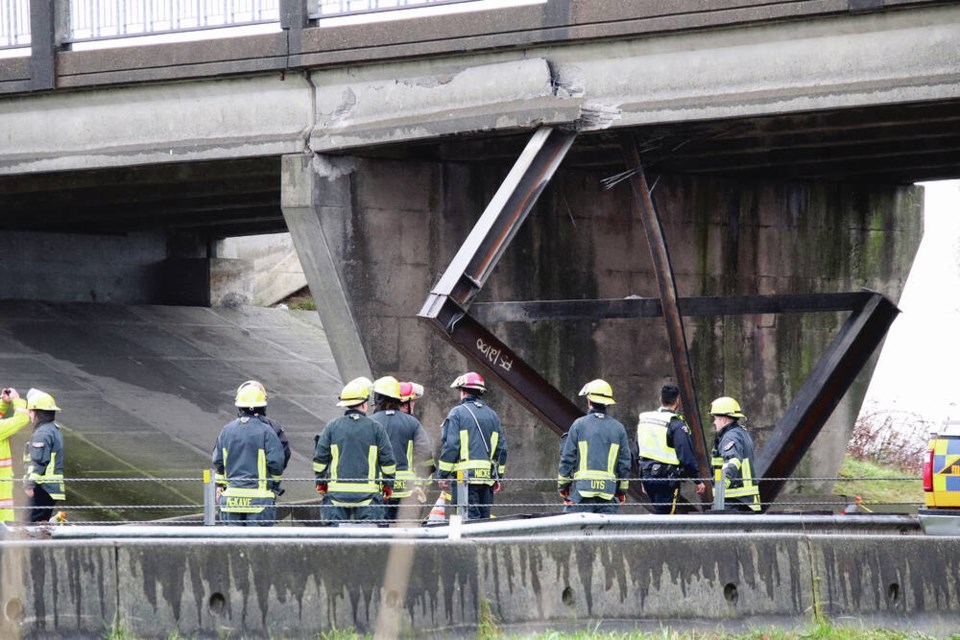Reporting on the recent amendments to ÎÚÑ»´«Ã½’s motor vehicle act mainly focused on what are now known as vulnerable road users — pedestrians, cyclists, other mobility devices and even livestock. What hasn’t been talked about so much are some sweeping changes within that same new legislative package now placed on the heavy commercial vehicle industry.
Effective this month BC is laying down some of the harshest penalties in the country for commercial drivers who run afoul of these new regulations.
The changes came about after a series of colossal crashes involving heavy trucks smacking into highway overpasses, either because their load height was improperly measured — or not measured at all — or drivers forgot to lower their cranes or dump boxes. Most of these incidents were caught on dash cameras making for spectacular evening news video clips.
Since 2021, there have been 30 overpass strikes but the government’s attention became sharply focused when 16 of those 30 strikes occurred in the last year alone.
It wasn’t only the structural damage to public infrastructure on the government’s mind, it was the massive traffic tie ups which followed. Blocking major arteries such as the Trans-ÎÚÑ»´«Ã½ east of Vancouver for up to a day or more, while engineers surveyed the damage, had some government folks probably thinking about the larger scale economic damage being done if this bridge bashing spate kept happening.
Some of the government’s commercial vehicle overpass crash report, updated on May 31st, reads like a grim epitaph:
• Highway 1/ No.3 Road overpass Chilliwack: “driver error — failure to follow permitted route;
• Hwy 99/George Massey Tunnel: “driver error — failure to follow conditions of permit”;
• Gilmore overpass/Hwy 1 eastbound: “driver error — vehicle height measured incorrectly prior to obtaining permit”.
The report contained plenty more.
As a result, in-cab warning devices became mandatory in ÎÚÑ»´«Ã½ as of June 1, 2024. All dump-style vehicles must be equipped with a warning device designed to alert drivers if the dump box is raised while the vehicle is in motion. Non-compliance with this requirement will result in a fine of $598.
Why this wasn’t a manufacturing standard from day one is beyond me, but I’m sure that was about keeping production costs low.
This is also just the regulatory penalty pertaining to vehicle equipment. A driver would also be liable to driving charges such as driving with due care and attention and disobeying overheight warning signs.
Still in the vehicle equipment regulation department, the fines for just having an overheight vehicle, regardless of whether you smash into a bridge or not, have also increased. A first offence for being overheight is now $575 — the highest penalty in the country.
The new legislation also required operators to have speed limiters installed in their trucks (built after 1994) by April 1st, 2024. This means that heavy rigs now cannot exceed 105 km/h on BC roads. Failing to have a speed limiter, not activating one, or setting it beyond the allowed speed limit carries a fine of $368 and 3 demerit points.
The cops also have enhanced powers now to inspect heavy rigs for compliance with additional penalties for drivers who might try to interfere with the inspection effort.
Naturally some truckers aren’t taking the changes too well. It’s a tough job with tight deadlines and no doubt lots of pressure from dispatchers and bosses who want the goods on the shelves as quickly as possible for the least amount of cost.
Those arguments obviously didn’t resonate with government highway regulators pondering how to repair 16 overpass strikes this past year and how to get things moving again.
The bottom line is that a professional driver is responsible for his equipment and load and the few minutes that it takes to make things right before setting out is critical. The results of not taking that time have been pretty self evident in the past 12 months.
Glove Box: Esquimalt recently followed through on its 2023 commitment to lower speed limits throughout the township. This included even the smallest lightly travelled streets, many of them dead ends, south of Lyall street around Saxe Point park which are now signed for 30 km/h. I recall a lot of rhetoric about evidence-based decision making in municipal affairs raised on many soap boxes throughout the CRD during the last election. I checked the ICBC stat site for the crash “problem” south of Lyall St in Esquimalt which would warrant 20 km/h speed reductions on streets where one car goes by every half hour. Between 2018 and 2022 — the last year for data availability — one pedestrian was struck. Vehicle crashes were 600% higher though — amounting to seven. The eyes of many locals are rolling.
johntcdriv [email protected]



